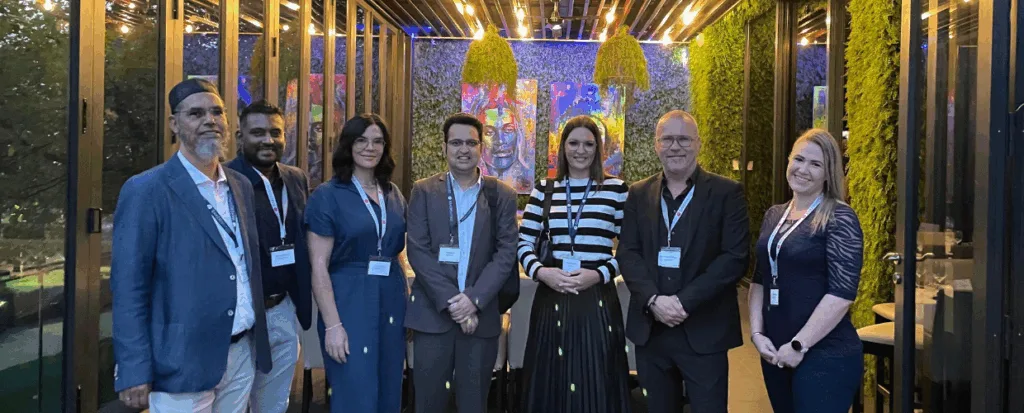Introduction
In today’s fast-evolving AECO (Architecture, Engineering, Construction, and Operations) landscape, the digital transformation journey is accelerating, driven by artificial intelligence (AI), data interoperability, and integrated workflows that connect design to construction. At a recent executive dinner hosted by Baker Baynes, leading figures from across the industry gathered for an evening of collaboration, insight, and future-focused discussion.
A standout moment of the evening came from Vijay Raina, Senior Technical Executive at Autodesk, who offered an expert perspective on how data is reshaping the built environment—and why it’s time for firms to prepare for a data-first future.
The Age of Connected, Granular Data
Vijay highlighted that the future of AECO lies in data granularity, interoperability, and accessibility. As demonstrated through the AEC Data Model, Autodesk’s vision is to democratise data, making it easier to access, exchange, and apply across every project stage.
This shift goes beyond simply digitising workflows. Vijay says we’ll no longer rely on traditional file-based exchanges in as little as five to ten years. Instead, information will be shared as pure data, removing barriers between software platforms and enabling seamless integration across disciplines.
Understanding the Autodesk AEC Data Model
The Autodesk AEC Data Model provides a unified approach to managing project data. It breaks complex design files into smaller, structured pieces of information, which are easier to use, automate, and share.
Building on this, the Autodesk Data Exchange initiative enables users to share only what’s relevant, improving data flow and collaboration without overwhelming teams with unnecessary information.
This is a key step in Autodesk’s mission to empower project teams by giving them better, faster access to the insights they need.
AI in AECO: From Buzzword to Business Value
Another major topic of conversation was AI. As detailed in Autodesk’s State of Design & Make Report, AI is now a tangible part of everyday AECO workflows, from design generation and predictive analytics to risk mitigation and cost control.
Attendees explored how platforms such as Autodesk Forma and Autodesk Construction Cloud (ACC) use AI to streamline design decisions, reduce manual effort, and deliver smarter project outcomes. A free Baker Baynes Transformation Tool, Introduction to Autodesk’s AI eBook, offers further insight into how these capabilities are applied in practice.
Local Innovation: Civil 3D RSA Country Kit Now in Beta
One of the evening’s key announcements for South African professionals was the Civil 3D RSA Country Kit, now available in Beta for download and testing. The country kit includes pre-configured templates, reports, and settings aligned to local standards, helping engineers and designers work more efficiently and accurately.
This local innovation shows Autodesk’s continued commitment to supporting region-specific workflows and delivering value at a local level.
An Evening of Insight and Connection
Alongside valuable technical discussions, the evening offered attendees a chance to connect directly with Autodesk leaders, including Geraldine Clark, Territory Account Sales Executive, and share perspectives on challenges and opportunities facing the AECO industry.
The facilitated “Ask the Expert” session created a space for honest dialogue, where ideas were exchanged, questions explored, and new collaborations formed.
Conclusion:
As the AECO industry continues to transform, one thing is clear: data is becoming the new foundation. With Autodesk’s continued focus on granular data, AI integration, and workflow interoperability, how we design, build and operate is about to change permanently.
For professionals looking to stay ahead, the message is simple: now is the time to embrace connected data, adopt emerging technologies, and invest in building digitally mature practices that will thrive in the future.






0 Comments